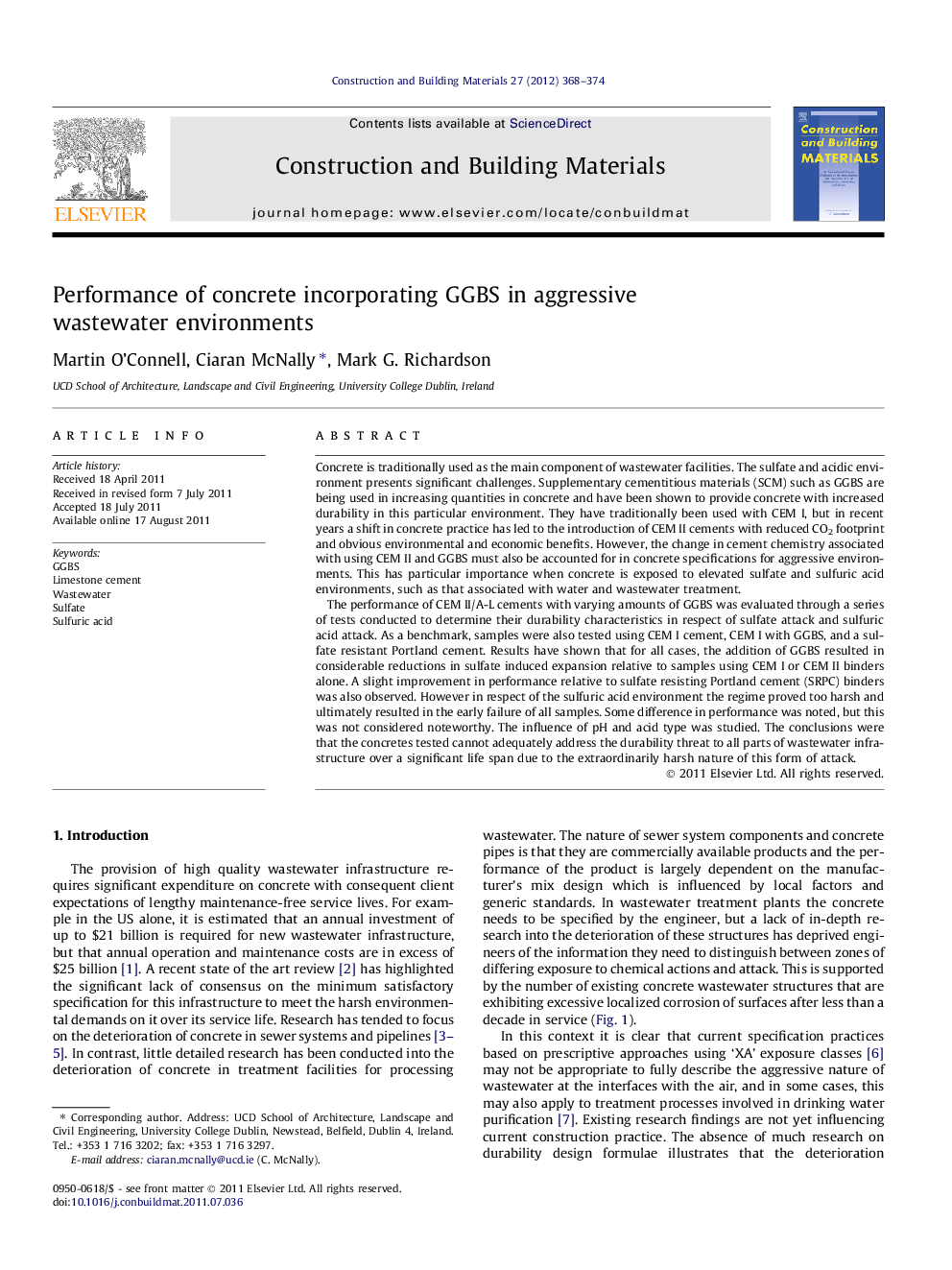| Article ID | Journal | Published Year | Pages | File Type |
|---|---|---|---|---|
| 259369 | Construction and Building Materials | 2012 | 7 Pages |
Concrete is traditionally used as the main component of wastewater facilities. The sulfate and acidic environment presents significant challenges. Supplementary cementitious materials (SCM) such as GGBS are being used in increasing quantities in concrete and have been shown to provide concrete with increased durability in this particular environment. They have traditionally been used with CEM I, but in recent years a shift in concrete practice has led to the introduction of CEM II cements with reduced CO2 footprint and obvious environmental and economic benefits. However, the change in cement chemistry associated with using CEM II and GGBS must also be accounted for in concrete specifications for aggressive environments. This has particular importance when concrete is exposed to elevated sulfate and sulfuric acid environments, such as that associated with water and wastewater treatment.The performance of CEM II/A-L cements with varying amounts of GGBS was evaluated through a series of tests conducted to determine their durability characteristics in respect of sulfate attack and sulfuric acid attack. As a benchmark, samples were also tested using CEM I cement, CEM I with GGBS, and a sulfate resistant Portland cement. Results have shown that for all cases, the addition of GGBS resulted in considerable reductions in sulfate induced expansion relative to samples using CEM I or CEM II binders alone. A slight improvement in performance relative to sulfate resisting Portland cement (SRPC) binders was also observed. However in respect of the sulfuric acid environment the regime proved too harsh and ultimately resulted in the early failure of all samples. Some difference in performance was noted, but this was not considered noteworthy. The influence of pH and acid type was studied. The conclusions were that the concretes tested cannot adequately address the durability threat to all parts of wastewater infrastructure over a significant life span due to the extraordinarily harsh nature of this form of attack.
► Studied performance of GGBS/CEM II concretes in aggressive wastewater environments. ► Conducted high quality tests to determine in-service durability characteristics. ► Critically analyzed the way that wastewater infrastructure is specified. ► Identified key areas of weakness in current concrete practice.
